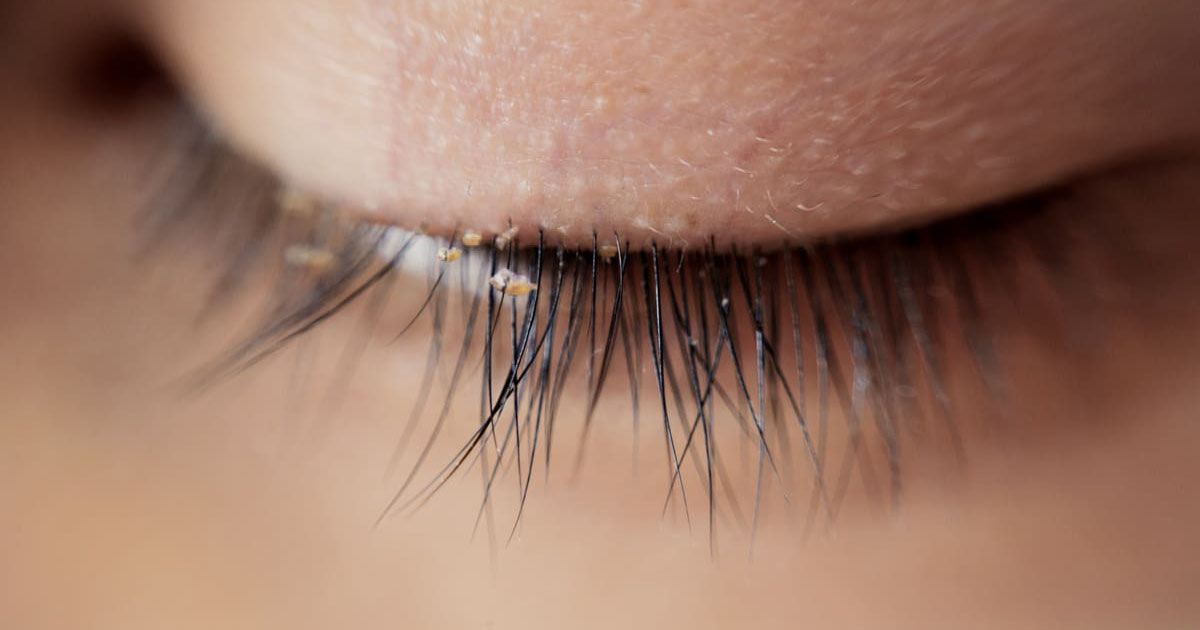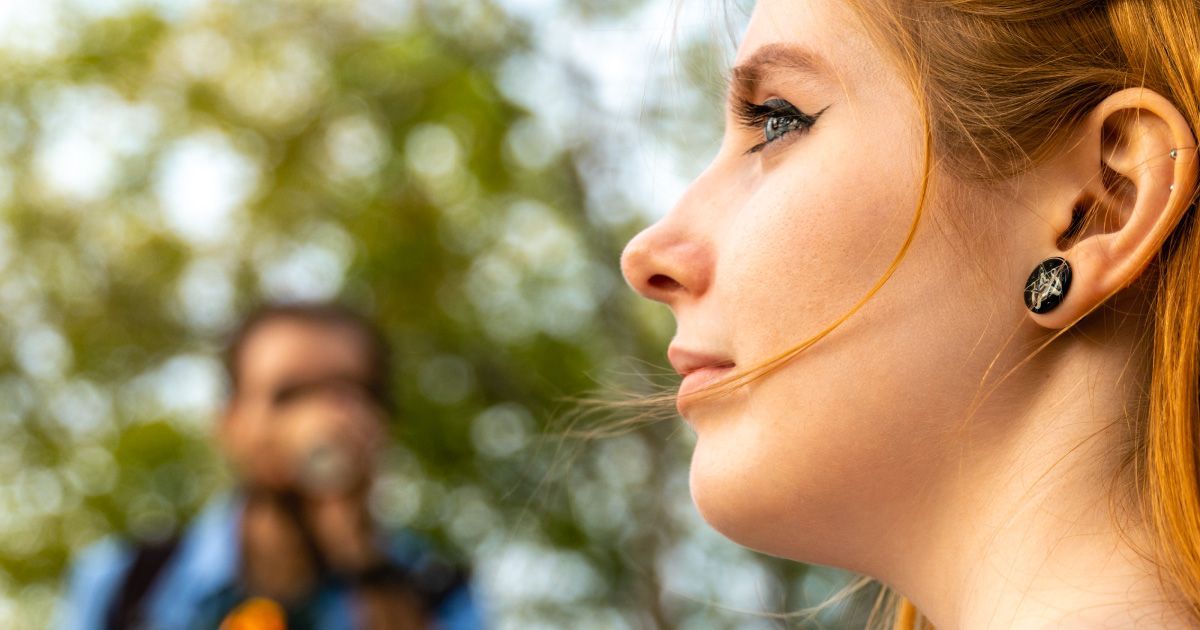Eyelash Mites: The Microscopic Creatures Living on Your Face

Read time: 6 minutes
It might sound like something out of a science fiction novel, but microscopic mites are living on your face - specifically in the follicles of your eyelashes. Known as Demodex mites, these tiny arthropods are a natural part of the human skin microbiome. Although most people live in harmony with them, an overgrowth of these mites can lead to a range of eye issues, from itching and redness to chronic dry eye and blepharitis.
Let’s explore what eyelash mites are, why they’re there, what symptoms they can cause, and what you can do to manage or prevent problems associated with them.
What Are Eyelash Mites?
Eyelash mites, scientifically referred to as Demodex folliculorum and Demodex brevis, are microscopic parasites that live in or near hair follicles and sebaceous (oil) glands on the face. D. folliculorum primarily inhabits the follicles of eyelashes and eyebrows, while D. brevis resides deeper in the sebaceous glands of the skin.
Measuring about 0.3 to 0.4 millimeters in length, these mites are invisible to the naked eye. They have long, segmented bodies and eight stubby legs near their head, allowing them to crawl slowly across the skin. They feed primarily on sebum (the oily substance produced by the skin) as well as dead skin cells and debris found around the hair follicles.
The Shocking Truth: Almost Everyone Has Them
Eyelash mites are incredibly common. Studies suggest that nearly all adults have some number of Demodex mites living on their skin, especially those over the age of 60, where prevalence approaches 100%. They're not necessarily a sign of poor hygiene, in fact, they’re considered part of the normal human skin ecosystem.
These mites are typically acquired during childhood through direct contact and remain on the body throughout life. In most cases, they cause no noticeable symptoms and go undetected. Problems arise, however, when their population grows out of control.
What Causes an Overgrowth?
A healthy immune system and balanced skin flora usually keep Demodex populations in check. However, several factors can contribute to an overgrowth:
- Aging: Sebum production increases with age, providing a more favorable environment for mites.
- Weakened immune system: Medical conditions or medications that suppress immunity can lead to unchecked mite reproduction.
- Oily skin: Higher sebum levels offer more food and shelter for the mites.
- Poor facial hygiene: Irregular cleansing of the face or eyelids can allow dead skin and oil to build up, creating a breeding ground for mites.
- Cosmetic habits: Heavy use of makeup, not removing eye makeup thoroughly, or sharing cosmetics can also contribute to increased mite populations.
Mating on Your Face While You Sleep
Perhaps one of the more unsettling facts about eyelash mites is their nocturnal mating behavior. These mites are most active at night. As you sleep, they emerge from your follicles to crawl onto your skin and seek out mates. After reproducing, the female mites return to the follicles to lay eggs - typically around 20 eggs per mite. These eggs hatch into larvae, which mature in about a week.
While it might sound disturbing, this microscopic nightlife usually goes unnoticed - unless their numbers surge and symptoms begin.
Signs You May Have Too Many Eyelash Mites
Most people coexist with eyelash mites without symptoms. However, when there's an overpopulation, it can cause a range of eye and skin issues:
- Itchy eyelids (especially in the morning)
- Dry, red, or irritated eyes
- Crusty or flaky debris at the base of the eyelashes (similar to dandruff)
- Loss of eyelashes or thinning lashes
- Swollen or inflamed eyelid margins (blepharitis)
- Foreign body sensation or gritty feeling in the eyes
- Chronic eye irritation that doesn’t improve with standard dry eye treatments
These symptoms occur because the mites and their waste products can trigger inflammation, clog oil glands (meibomian glands), and disrupt the tear film that keeps the eyes lubricated.
The Link to Blepharitis and Dry Eye Syndrome
Demodex mites are increasingly recognized as a contributing factor in blepharitis, a common condition characterized by chronic inflammation of the eyelid margins. In cases of meibomian gland dysfunction (MGD), Demodex can block the oil glands, reducing the lipid layer of the tear film and worsening symptoms of dry eye syndrome.
Research suggests that patients with treatment-resistant dry eye or blepharitis should be evaluated for Demodex infestation. It’s not uncommon for patients to cycle through artificial tears, ointments, and anti-inflammatory treatments with little relief - until the mite problem is addressed directly.
Diagnosis and Detection
Diagnosing eyelash mites typically involves a clinical eye exam. Eye care professionals may use magnification and light to detect signs of infestation. In some cases, they may gently remove a few eyelashes and examine them under a microscope to confirm the presence of mites.
The telltale sign? Cylindrical dandruff - a sleeve-like accumulation of waxy debris at the base of the lashes—is considered a hallmark of Demodex overgrowth.
Treatment and Management
Fortunately, treatment for Demodex is available and effective when combined with good hygiene. Options include:
- Tea Tree Oil: This essential oil is toxic to mites and commonly used in lid cleansers and wipes. Commercial products containing 50% tea tree oil are used in-office, while lower concentrations (around 5-10%) are used for at-home maintenance.
- Cliradex® wipes: A natural, preservative-free wipe that contains 4-terpineol, the active component of tea tree oil, to kill mites and soothe inflammation.
- BlephEx® treatment: An in-office procedure that uses a rotating micro-sponge to exfoliate the eyelid margins and remove biofilm and debris.
- Zocular products: These use okra-based ingredients to cleanse and hydrate the eyelids, also targeting Demodex-related inflammation.
- Consistent eyelid hygiene: Daily use of lid scrubs or foam cleansers can prevent re-infestation and maintain a healthy lid margin.
Tips for Prevention
To reduce your risk of a Demodex overgrowth or reinfection, follow these best practices:
- Wash your face thoroughly each night, especially around the eyes.
- Remove all eye makeup before bed.
- Avoid sharing eye cosmetics or applicators.
- Replace mascara and eyeliner regularly.
- Clean pillowcases and towels frequently.
- Discuss persistent dry eye symptoms with your eye care provider.
The Takeaway
Eyelash mites may be unsettling to think about, but they’re a normal part of the skin’s ecosystem. In moderation, they usually live peacefully without causing harm. It’s when their population surges that problems begin - especially for the eyes and eyelids.
If you're experiencing persistent dry eyes, itching, or irritation that doesn’t seem to improve, it may be time to look deeper - literally. Schedule a comprehensive eye exam with our team at Urban Optiks Optometry. We’ll evaluate your ocular health, check for signs of eyelash mites, and guide you through effective treatment options. Your comfort and clarity start with proper care. Book your appointment today and give your eyes the attention they deserve.
Share this blog post on social or with a friend:
The information provided in this article is intended for general knowledge and educational purposes only and should not be construed as medical advice. It is strongly recommended to consult with an eye care professional for personalized recommendations and guidance regarding your individual needs and eye health concerns.
All of Urban Optiks Optometry's blog posts and articles contain information carefully curated from openly sourced materials available in the public domain. We strive to ensure the accuracy and relevance of the information provided. For a comprehensive understanding of our practices and to read our full disclosure statement, please click here.


















